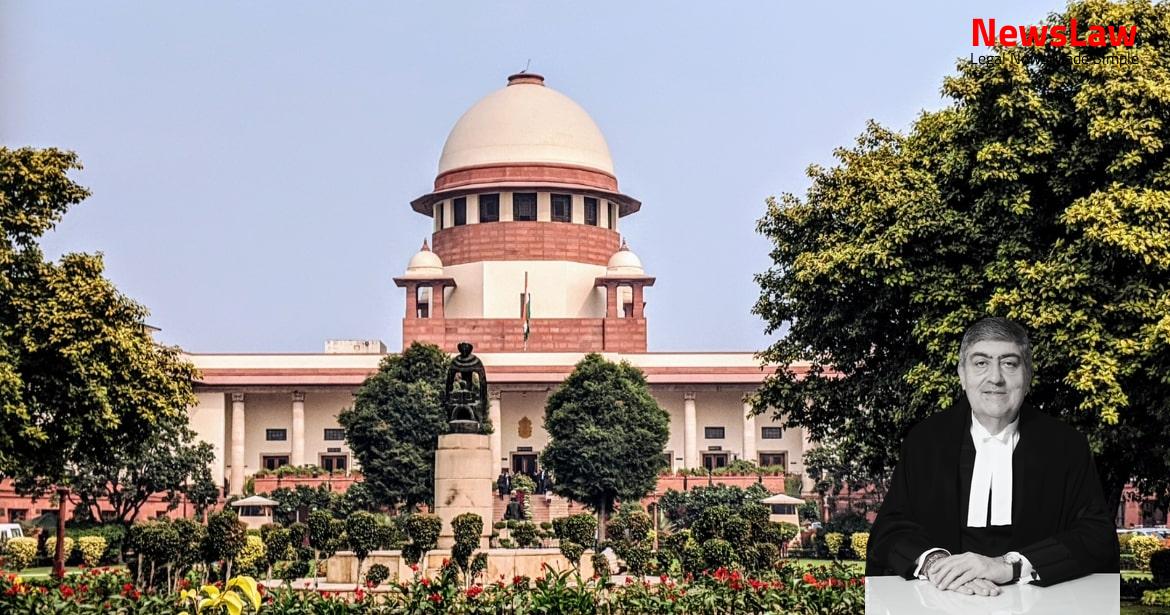The recent court judgment delves into the legal intricacies surrounding the enhancement of compensation in a personal injury case. Through a thorough legal analysis, the court considered factors such as loss of earning capacity and future prospects to arrive at a revised compensation amount. The decision showcases the importance of detailed examination and application of legal principles in cases involving personal injury claims.
Facts
- The appellant, aged 23, was traveling on a bus owned by the respondent State Corporation when it collided with a stationary lorry on the Kolar Bangalore National Highway.
- The appellant sustained grievous injuries, including fractures in the arms and legs, resulting in a disability of 31.1% of the whole body.
- The Motor Accident Claims Tribunal (MACT) held the respondent liable for the accident due to the rash and negligent driving of the bus driver, and awarded compensation of Rs. 35,24,288 with interest at 7.5% per annum.
- The appellant filed a claim for Rs. 1 crore for injuries sustained in the accident, citing various expenses and losses under different heads.
- An FIR was registered naming the bus driver as an accused in the case.
- The appellant, a software engineer, was awarded compensation for loss of earning power based on a multiplier of 17 applied to her monthly salary.
- The appellant underwent treatment at R.L. Jallappa Research & Medical College Hospital, Tamak, Kolar, and Manipal Hospital, Bangalore for 8 months.
- The appellant has filed before the Court claiming enhancement of compensation to Rs. 41,69,831 under various heads and revised interest rate at 12% per annum.
- The High Court, in a common order dated 27.10.2017, sustained the interest rate and decisions on two matters.
- The High Court confirmed negligence findings against the bus driver, leading to a reduced compensation of Rs. 25,00,000/-
- The compensation reduction was primarily due to incorrect application of the multiplier method for loss of earning power, without evidence on impact of the injuries.
- In the judgment dated 20.10.2014, the Motor Accident Claims Tribunal (MACT) considered a permanent disability of 31.1% and used the multiplier method to calculate loss of earning power.
Also Read: Supreme Court Judgment on Single Till Mechanism for HRAB Calculation: A Comprehensive Analysis
Analysis
- The position regarding the multiplier to be applied in the case of the appellant is not disputed by the learned counsel for the respondent State Corporation, concluding that ’18’ should be applied instead of ’17’.
- The appellant’s loss of earning capacity with a permanent disability of 31.1% in the left leg is being assessed.
- The principles applicable to the appellant’s case are listed, referring to settled law in similar cases.
- Three aspects need to be examined: the application of a multiplier of ’17’ instead of ’18’, the increase in the multiplier based on the appellant’s age of 23 years, and consideration of future prospects in life and career while applying the multiplier method.
- Photographs showing the current physical state of the appellant have been reviewed, indicating the extent of injuries even after treatment.
- The appellant’s claim for compensation is based on settled principles as outlined in specific cases, highlighting the need to consider future prospects in life and career advancement.
- Victims of accidents are entitled to compensation for permanent or temporary disabilities.
- Compensation should cover pain, suffering, trauma, loss of income, inability to lead a normal life, medical expenses, and loss of expectation of life.
- The multiplier method is used to quantify loss of income due to death or permanent disability.
- The disability certificate in this case shows multiple hospitalizations over 1 ½ years with various injuries.
- The injuries listed include compound fractures, fractures in forearms, hands, femurs, and metacarpals.
- In the age group of 15-25 years, the multiplier for compensation is ’18’, considering the extent of disability.
- Appellant’s contention regarding future prospects should be considered with a 31.1% permanent disability
- Quantification based on National Insurance Co. Ltd. case would be 50% of actual salary considering appellant’s age
- Appellant reduced interest rate claim to 9% during the hearing, in line with judicial pronouncements including Jagdish case
- No serious dispute raised by respondent’s counsel regarding the 9% interest rate as per this Court’s application
Decision
- Appeals allowed with costs throughout.
- The compensation calculated by the appellant as specified in para 5 of the synopsis to be adopted.
- Breakdown of compensation amounts for various heads provided.
- Appellant entitled to compensation of Rs. 41,69,831/- with 9% simple interest per annum from date of application till date of payment.
- Respondent State Corporation to transmit the balance amount to the appellant within a maximum period of six weeks from today.
Also Read: Selection and Appointment of Judicial Officers in Himachal Pradesh
Case Title: ERUDHAYA PRIYA Vs. STATE EXPRESS TRANSPORT CORPORATION LTD (2020 INSC 466)
Case Number: C.A. No.-002811-002812 / 2020



